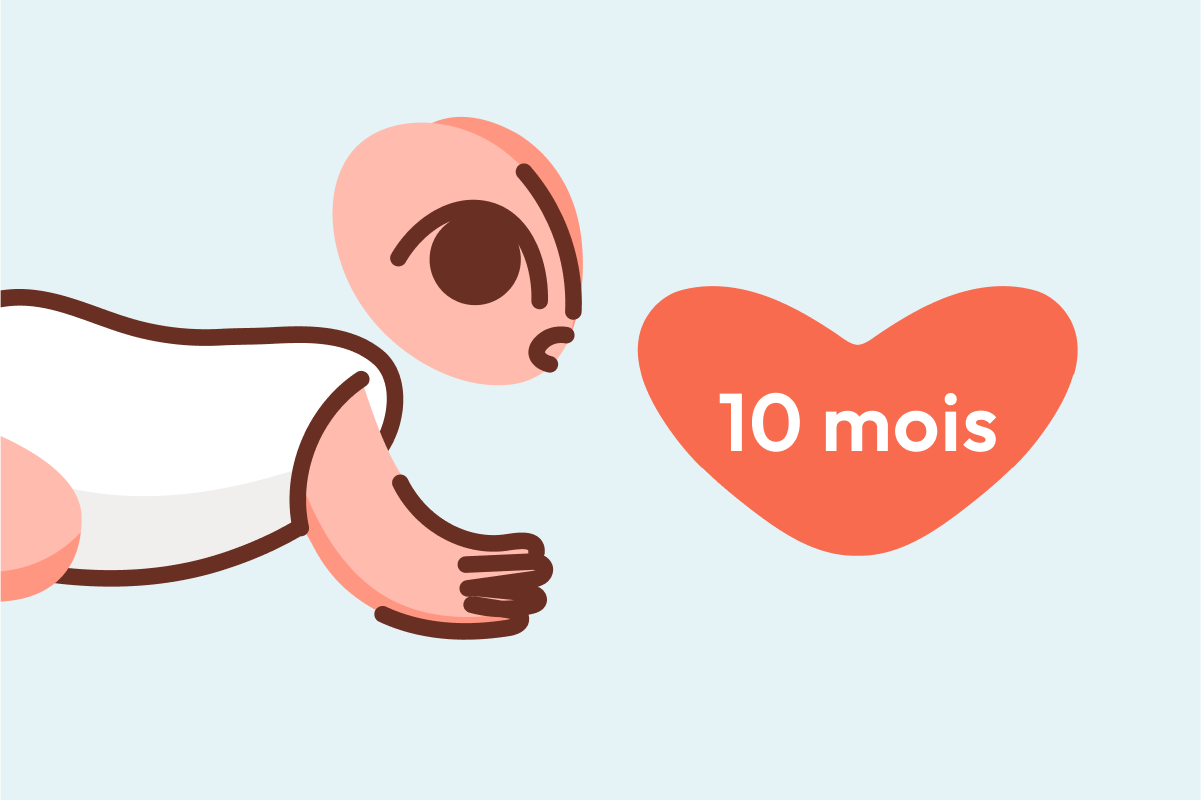Who could have predicted the dazzling whirlwind that is life with a baby 10 months old? Each day brings an entirely new rhythm—the scramble of tiny hands reaching, the mumbles of first words, the selective fuss of a growing appetite, and restless moments that tumble straight from nap to discovery and back again. Perhaps you’re wondering, “Will my baby ever nap at the same time twice?” or “Is it normal for my little one to be obsessed with every cord and cupboard?” These are genuine wonders, packed into fleeting days that test patience and fill hearts in equal measure. The voyage of baby 10 months is a patchwork of triumphs, stumbles, clingy hugs… and so many what-ifs. What can spark the healthiest growth, what is truly essential for their diet, and how to channel all that boundless curiosity into safe, meaningful activity? Explore these intricacies with medical insight and practical guidance, designed for families thriving amidst the beautiful unpredictability of a ten-month-old.
Physical and motor development: From crawling to cruising
Gross motor skills—energy in motion
There is a particular thrill in watching a baby 10 months explore the world on hands and knees—sometimes with a curious shuffle, sometimes bursting into a determined crawl that seems almost acrobatic. Stability grows; sitting becomes assured, and for many, the first attempts at standing with furniture support mark a leap in independence. Some babies even take wobbly, expectant steps along the sofa’s edge, “cruising” eagerly after a flash of colour or favourite toy.
- Supervised floor time is not just play—it’s a training ground for musculature, spatial awareness, and increasing confidence. Push toys, soft balls, and firm, stable furniture offer chances to practise pulling up and balance. Even an impromptu obstacle course made with pillows teaches your baby the beginnings of problem-solving and spatial mapping.
- Always keep in mind: each baby 10 months achieves these feats in their unique sequence and tempo. What matters most is the presence of opportunity and encouragement.
Fine motor skills—Precision in little fingers
You might notice those pinching movements—the famous pincer grasp—developing as your child uses their thumb and forefinger to diligently pick up crumbs, beads, or almost invisible threads on the carpet. Manipulating blocks, transferring toys between hands, exploring textures with deep concentration: these activities fuel neural development and early autonomy.
- Stacking cups, filling and emptying small containers, or exploring textured books are not just games—they stimulate tactile perception, dexterity, and hand-eye coordination. Self-feeding, while often chaotic, celebrates the development of these very fine motor skills as much as it nurtures independence.
Language, communication, and emotional growth
Early communication and social signals
Sound fills the home—a babble of syllables, sometimes eerily reminiscent of real words, peppered with enthusiastic gesturing. Baby 10 months might say “mama” or “dada” with indefinable pride, point towards the cat or wave emphatically at a departing relative. This is pre-verbal language at its most charming; communication that relies on mimicry, intonation, and emotional expression as much as vocabulary.
- Engage in simple conversation, narrate daily actions, and name objects (“Look, banana!”). Regular reading of colourful picture books, interactive rhythms in nursery songs, and games like peek-a-boo stimulate receptive and expressive language development. Each response to your words—be it a clap, smile, or inquisitive look—builds a strong foundation for the language milestones soon to follow.
Emotional development—Frustration and reassurance
Emotional landscapes shift rapidly as babies become increasingly aware of disappointment and separation. Frustration bubbles up when a tower collapses or a toy stays just out of reach. You’ll witness the early traces of empathy: a frown if another child cries, a quizzical stare during tension.
- Describing feelings plainly (“You’re sad because the block fell.”) and offering soothing routines helps your child name, process, and eventually regulate emotions. Gentle reassurance (hugging, soft speaking) during upset creates a safe, trusted environment where big feelings can be managed, rather than feared.
Cognitive development: Curiosity, imitation, and problem-solving
Exploring the unseen
For the baby 10 months, the concept of object permanence—the idea that hidden things do not simply vanish—fuels endless curiosity. A hidden toy under a cushion elicits relentless searching; peek-a-boo becomes cause for delight rather than confusion. Imitation, too, reaches new heights as your baby mimics the way you wave bye-bye or copy your method of banging blocks together.
- Support thinking skills with hiding and revealing games, offer containers to open and shut, and let your child experiment with various safe household items. This constant experimentation is not mere play—it forges neural connections, enhances working memory, and nurtures flexibility in problem-solving approaches.
Play, autonomy, and daily organisation
Designing a varied day
The daily setting for a baby 10 months should be an ever-shifting mix of activity and quiet. Morning bursts with energy are best channelled into crawling, standing, and climbing games. Afternoons invite calm—picture books, lullabies, simple puzzles.
- Use toys with diverse textures, sounds, and shapes. Allow solo play in a safe, designated space to nurture concentration and independence. Flexibility is helpful, but a gentle routine (play, meal, nap, play) allows your child to anticipate what comes next, which decreases stress and fosters security.
Encouraging independence
Simple, repeated acts—self-feeding with soft pieces of food, manipulating chunky puzzles, standing unaided for a few heartbeats—are each small declarations of independence. Provide gentle encouragement, standing nearby rather than intervening swiftly unless truly needed. Every baby 10 months takes pride and comfort in these moments of “I did it myself.”
Health and skin care: Protecting sensitive skin
Infant skin—A delicate barrier
It is common, and sometimes expected, for baby 10 months to encounter episodes of dry skin or the characteristic patches of infant eczema (medically termed atopic dermatitis). You may notice red, dry, and sometimes itchy plaques often appearing on cheeks, elbows, knees, or behind the ears. These changes stem from an immature skin barrier and heightened sensitivity to environmental triggers.
- Moisturisation is essential: use bland emollients or products formulated for sensitive or atopic skin, ideally after a short, lukewarm bath. Unscented and soap-free cleansers reduce irritation risk. Cotton or other natural fibres minimally irritate, while hypoallergenic detergents lower the chance of a flare.
- Consultation with a paediatrician is wise if symptoms persist—treatment might involve topical corticosteroids (applied sparingly), or mild antihistamines if itching disturbs sleep or comfort.
Sleep routines and the shifting needs of baby 10 months
The rhythm of rest
Reflecting on sleep, families of a baby 10 months sometimes marvel at the unpredictability—two solid daytime naps and a restful 10–12-hour stretch at night are an ideal, but not always reality. Night waking, especially, can peak due to heightened motor activity or separation anxiety.
- Patterns become easier with consistency: gentle pre-sleep routines (bath, lullaby, special blanket or toy) signal the start of rest. The sleep environment should be calm, dark, and cool—minimising stimulation helps the baby 10 months associate bed with relaxation. Put your child to bed when drowsy but not fully asleep to help them learn to self-soothe.
Night wakings
These disruptions may coincide with bursts of developmental progress—crawling or pulling to stand rarely stops just because the sun sets! Should your baby wake, offer soft verbal reassurance and resist picking them up unless distressed. Consistent, calm responses help your baby adjust, providing reassuring continuity while supporting overall sleep quality.
Feeding and nutrition—Fundamentals for growth
Milk, solids and the leap to new textures
Breast milk or infant formula forms the backbone of nutrition for a baby 10 months—on average, intake ranges from 500 to 700 ml (24–32 ounces) daily. New textures and flavours steadily populate the diet, laying the groundwork for healthy eating habits.
- Introduce cooked vegetables, fruits, grains, and soft proteins such as lentils, eggs, or cooked fish. Cut food into small, manageable pieces to lower the risk of choking. Avoid salt, sugar, whole nuts, and honey at this age; water offered in a cup supports hydration without unnecessary sweeteners.
- Novel foods—especially common allergens like egg or dairy—can be introduced with supervision, ideally one at a time, watching for any unexpected reactions. Always consult your paediatrician if new symptoms (rash, vomiting, swelling) occur after a feed.
Baby-led weaning vs. spoon-feeding
Some families choose a baby-led weaning approach—allowing the baby to self-feed soft, safe strips of food—while others favour spoon-feeding purees. Both foster different developmental skills and can be balanced according to the child’s readiness and the family’s routine. There is no “perfect” method—nutritional adequacy and safety remain the priorities.
Safety and childproofing: Exploration with boundaries
At this stage, mobility brings a monumental expansion in both risk and opportunity. Safeguards—safety gates at stairs, plug socket covers, and secure furniture—allow for confident exploration without constant intervention. All cleaning products, medicines, and small items need to be firmly out of sight and reach.
- During meals, cut foods like grapes lengthwise, never leave your baby 10 months unsupervised, and avoid distractions that might prompt mishaps. Rear-facing car seats and safely anchored furniture form the backdrop to a setting where independence doesn’t come at the cost of security.
Key Takeaways
- The path of development for baby 10 months is richly unpredictable. Don’t worry if your child is not matching the neighbour’s baby step for step—variation is both normal and healthy.
- Motor skills, communication, and cognition blossom in safe, supportive, and diverse environments—offer chances to play, learn, and experiment, and revel in those messy self-feeding attempts!
- Sleep requires routine and gentle flexibility; try to establish regular patterns, but adapt if growth or excitement throws things astray.
- Monitor skin carefully, moisturise generously, and seek advice if persistent rashes or itching occur.
- Nutrition at this age is about adding variety, safeguarding against choking, and balancing solids with adequate milk intake.
- Safety grows even more pressing as mobility surges—robust childproofing preserves new freedoms and wellbeing.
- For continuing support and personalised advice, download the application Heloa. It offers tailored health questionnaires and practical parenting guidance entirely free.
Questions Parents Ask
Can a 10-month-old have cow’s milk?
Cow’s milk as a drink is not recommended as the main beverage for a baby 10 months, since the gastrointestinal system is still best adapted to breast milk or infant formula. Small amounts of cow’s milk can be included in dishes like porridge. Always consult with your healthcare provider if uncertain, especially regarding food sensitivities or allergies.
What activities help stimulate a 10-month-old’s development?
Singing, reading colourful short stories, peek-a-boo, exploring different safe objects and textures—all these games encourage language, fine motor, and gross motor skills for a baby 10 months. Letting your baby handle finger foods or cruise along furniture adds new challenges and supports muscle development.
How much should a 10-month-old eat at each meal?
Portions will swing wildly—from just a few teaspoons to several spoonfuls. Appetite shifts are absolutely normal for a baby 10 months. Prioritise a mix of foods and respect your child’s hunger cues. Pressure-free mealtimes help establish a joyful, healthy relationship with food.
My 10-month-old is not crawling or pulling to stand. Should I be worried?
Developmental milestones for baby 10 months are reference points—many healthy children take time to reach some skills. If your child is not attempting to crawl, stand, or babble, or if you notice a loss of previously gained abilities, consult your paediatrician for an expert assessment.
How do I deal with separation anxiety at 10 months?
Separation anxiety is a normal feature at this age. Short goodbyes, consistency in routines, and familiar comfort objects help your baby 10 months understand that you always return. Over time, their emotional resilience and confidence will grow.
Which foods should be avoided for babies at 10 months?
Avoid whole nuts, honey, popcorn, hard raw vegetables, and large chunks of meat or fruit for a baby 10 months. These pose choking risks or may trigger allergies. Continue focusing on soft, cut, well-cooked foods for safe and happy meals.
How much sleep is enough for a 10-month-old?
On average, a baby 10 months needs about 11–14 hours of sleep in a 24-hour cycle, distributed between two daytime naps and night rest. Nevertheless, some variation is natural—the important part is a steady, responsive routine that gives your child ample opportunities to rest and recharge.
Further reading:









